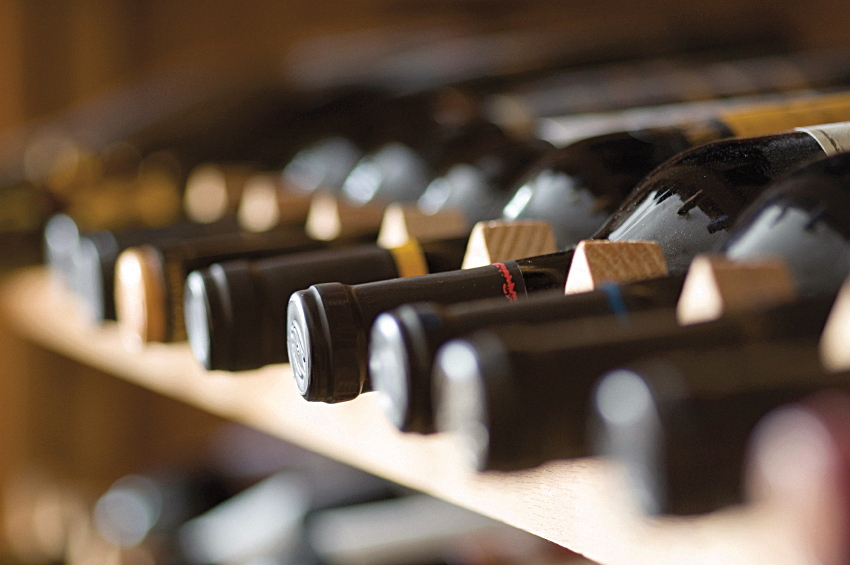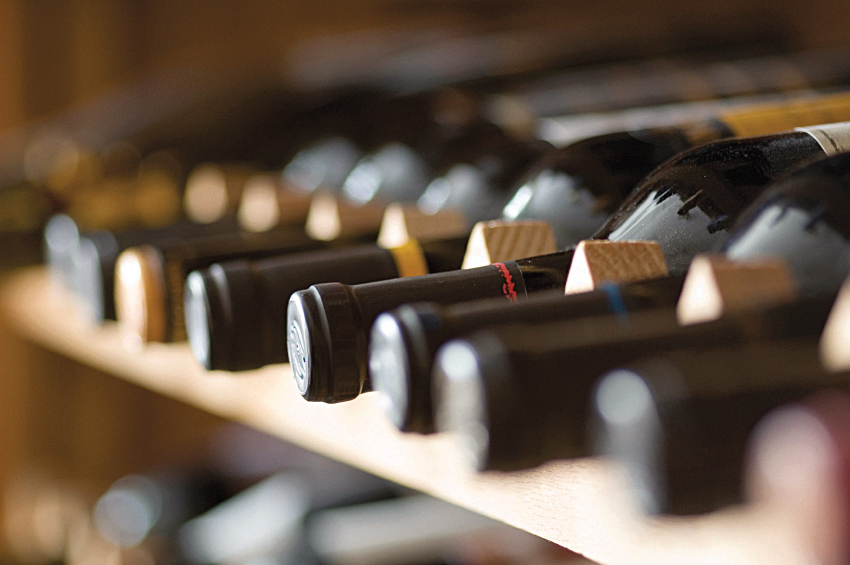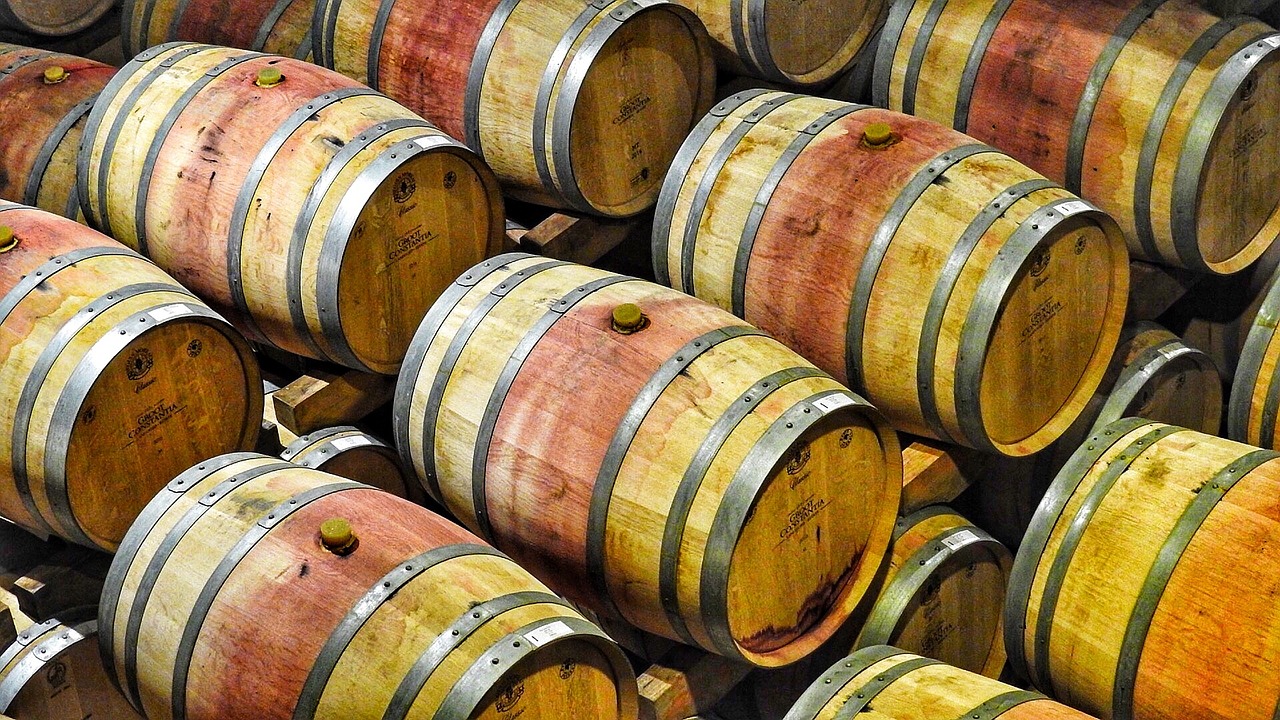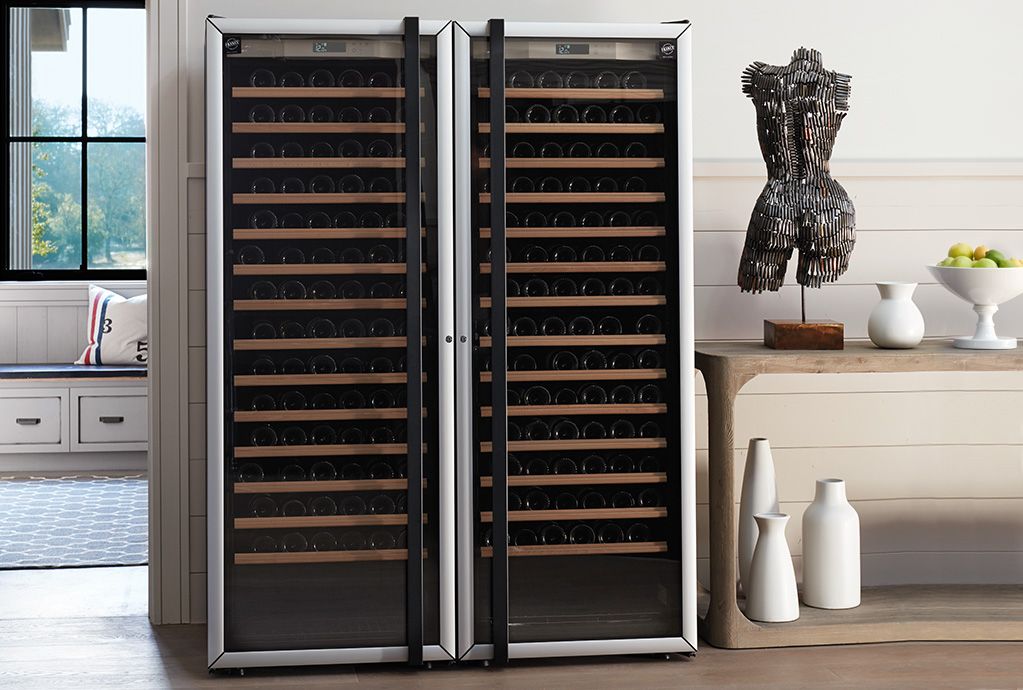
One of the most impactful details of winemaking is the technique used during aging, when the wine is left, often for many years, to change its flavor and quality. Everyone has heard about the use of oak barrels to complete the process, but each material has its own effect on the taste and overall experience of wine. Even the overarching term “oak” has multiple variations of wood. The number of times the barrel has been used will also change the final product.
This brief guide shows the types of aging vessels and why each procedure is used.
Bottle Aging

Meant to develop the flavor within a high quality wine, the glass container is completely sealed and non-permeable, limiting the oxidation of the wine inside. If left unchecked too early in the process, bottle aging can quickly lead to a complete alteration of the wine tasting experience, rapidly changing the flavor. This can be a good or bad thing, depending on the type of wine.
It is rarely used by winemakers as the primary method of aging, due to its unpredictability. Once a wine has already been properly aged by the winemaker and is available for purchase, ask what the recommended length of additional bottle aging will be for that particular vintage.
Oak Barrel Aging

Oak barrel aging has been prominent in the world of winemaking for almost as long as wine has been a product, creating an indelible impression of wine being properly aged in a large oak cask. There are many subcategories dedicated to specific types of oak and their preparation. Depending on individual traits and toasting, it will infuse a different set of flavors and mouthfeel depending on each barrel.
French Oak
When reading the term ‘oak-aged’ the likelihood is that the wood had a European origin. French Oak is fairly soft in comparison to the other woods available, which makes it extremely good at transferring flavors effectively. Wine aged in French Oak barrels takes on deeper, richer flavors both from the oak itself and from whatever was stored in the barrel beforehand. Similarly, this flavor enhancement also leads to intense aromas, as well as an increase in tannin content. It’s this full-bodied and comprehensive building of flavor that lends French Oak to red wine production, particularly due to the trademark smoothness that French Oak offers.
American Oak
American Oak is lighter and finer in its aroma. As a harder wood, the barrels have significantly less of an impact on the wine’s flavor and aroma, preserving the sweetness and fruitiness of the grapes. As with all aging processes, timing is key. American Oak barrels are less impactful than their European cousins, but they do add unique notes to the flavor profile (coconut and dill) that are easily recognizable. They result in a sweet, creamy texture.
Toasting
In addition to the choice of wood, winemakers have the choice of toasting level, which happens when the cooper heats the planks on the barrel interior. Light toast often offers a signature vanilla flavor, medium toast has richer tones of coffee and the ‘oaky’ flavor. A heavy toast will give a slightly smoked flavor with nutmeg and baking spice.

Concrete Aging
Aging wine using concrete is far from a new concept; however, it is currently seeing increased experimentation and use. The initial problem with concrete aging was how it limits the oxidization process. During maturation, wine flavor and experience develops not just through interactions between the vessel and its contents, but through oxidization and the complex chemical reactions that occur during the process. This is what makes oak such a popular choice of material; it holds its own flavor whilst also being porous enough to allow for these oxygen interactions. Concrete is not so porous, which means that the development of complex flavors is less achievable.
Despite this, concrete vats do have their purpose, as the lack of oxygen exchange allows for much more effective preservation of flavor. With this in mind, concrete is a viable option for anyone looking to maintain an aroma or flavor effectively. It tends to be more popular when aging white wine.
Stainless Steel Aging
Similar to concrete, stainless steel serves as an excellent preserver. It does not have a direct effect on flavor, mouthfeel or general wine experience. This makes stainless steel aging perfect for those wishing to preserve the natural flavor of their wine. An additional advantage is that stainless steel is significantly easier to clean than concrete and is also more durable, making it exceptional for those who want to produce large quantities
regularly.
With this tight control, it becomes increasingly difficult to develop the complex, rich wines that oak barrels can achieve. For an easier process and simpler, lighter notes, stainless steel is a brilliant option. To create a more interesting experience at wine tastings, oak is the best choice.
This is just a brief analysis of the different maturation methods used during the winemaking process. Ultimately, winemaking is part science and part art, which is why the only way to truly know what works with a grape varietal is to taste and experiment with the different options available. See which one you prefer!
About the author: Gianluca Masons is a production specialist at Cranville Wine Racks and practicing winemaker seeking to experiment and create innovative new wine experiences.
I was lucky enough to spend some time in Châteauneuf-du-Pape recently and was interested to see the use of concrete tanks.
– Tom Sadler
Very interesting, good job and thanks for sharing such a good information, I really appreciated to your Techniques for Aging wine on this quality work.
– Robert Johnson